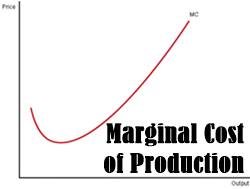
Table of Contents
Marginal Revenue Product (MRP)
What is the Marginal Revenue Product (MRP)?
Marginal productivity was first coined by American Economist John Bates Clark and Swedish economist Knut Wicksell. They were the first to show that revenue depends on the marginal productivity of additional Factors of Production. Marginal Revenue product refers to the marginal revenue that arises due to an addition of one unit of resource. It is also known as a marginal value product.

The marginal revenue product is calculated by multiplying the resource's Marginal Physical Product (MPP) by the Marginal Revenue (MR) generated. The MRP carries the assumption that the expenses on other factors do not change. Moreover, the factors also help determine the optimal level of a resource. Owners of businesses often use MRP analysis in order to make critical decisions regarding production.
Marginal Revenue Product Formula
The MRP is calculated by multiplying the resource’s marginal physical product (MPP) by the generated marginal revenue (MR).
MR= △TR/△Q
MR- Marginal Revenue
TR- Total Revenue
Q- Number of Goods
Talk to our investment specialist
Marginal Revenue Product Example
One of the key aspects that help predict MRP is how individuals make decisions on the margin. For exampke, suppose Jayan buys a packet of wafers for Rs. 10. This doesn't mean that he values all wafer packets at Rs. 10. However, it does mean that Jayan values one additional wafer packet more than Rs. 10 at the time of sale. So now you know that Marginal Analysis looks at costs and benefits from an increment perspective and not an objective one.
MRP and Wages
MRP is important to understand wage rates in the Market. It makes sense to have an additional employee at Rs. 1000 an hour, if the employee's MRP is more than Rs. 1000 an hour. If the extra employee is unable to make more than Rs. 1000 an hour in revenue, the company will go through a loss.
However, in reality, employees are not paid according to their MRP. This is true even in equilibrium. Rather, the wages are equal to the discounted marginal revenue product (DMRP). This happens because of varied preferences for the time between employers and d employees. DMRP also impacts the bargaining power between employers and employees. However, this stands untrue in the case of monopsony. When a proposed wage is below the DMRP, an employee may get bargaining power by taking his labour skills to different employers. If the wage is more than the DMRP, the employer can reduce wages or replace the worker. Through this process, the supply and demand for labour inch closer to equilibrium.
All efforts have been made to ensure the information provided here is accurate. However, no guarantees are made regarding correctness of data. Please verify with scheme information document before making any investment.












